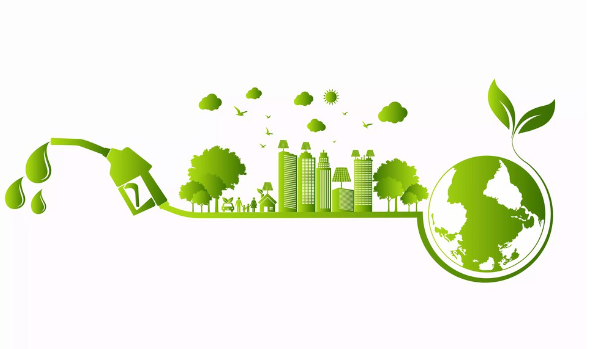India’s Ethanol Blended Petrol (EBP) Programme (GS Paper 3, Science)

Context:
- India is progressing towards its ambitious goal of blending 20% ethanol with petrol by the 2025-26 target date.
- This initiative is part of the country's broader strategy to enhance energy security, promote environmental sustainability, and support the agricultural sector.
Overview of Ethanol Blending:
- Target: Achieving a 20% ethanol blend by 2025-26 translates to producing approximately 1,000 crore litres of ethanol for blending with petrol.
- Current Capacity: As of December 2023, India’s ethanol production capacity had reached 1,380 crore litres. This includes 875 crore litres from sugarcane and 505 crore litres from foodgrains. The total capacity is close to the targeted amount, though it is predominantly sugarcane-based.
- Government Policy: To address feedstock demands, maize, surplus rice, and damaged grains are utilized for grain-based distilleries.
Ethanol Production:
- Definition: Ethanol (C2H5OH) is an anhydrous ethyl alcohol produced from high-starch crops such as sugarcane, maize, and wheat.
- Production in India: Primarily produced from sugarcane molasses through fermentation.
Blending Ethanol with Petrol:
- E10: 10% ethanol and 90% gasoline. Commonly used in various countries.
- E15: 15% ethanol and 85% gasoline.
- E85: 85% ethanol and 15% gasoline. Used in flex-fuel vehicles designed for high ethanol content.
- Benefits: Ethanol helps in more complete combustion in engines, reducing emissions and environmental pollution. Being derived from plants, ethanol is also considered a renewable fuel.
India’s Ethanol Blended Petrol (EBP) Programme:
- Launch: Initiated in 2003 with the aim of promoting alternative fuels and reducing dependency on imported crude oil.
- Objectives:
- Reduce Import Dependence: Minimize reliance on imported crude oil to enhance energy security.
- Environmental Benefits: Lower air pollution and greenhouse gas emissions by using cleaner-burning ethanol.
- Support for Farmers: Create a market for ethanol production from crops like sugarcane and maize, benefiting the agricultural sector.
Key Components:
- Blending Targets: The National Policy on Biofuels (2018) targets a 20% ethanol blend by 2025.
- Phased Implementation: The program initially aimed for a 10% blend (E10) by 2022, with progressive steps towards higher blends like E20.
- Infrastructure Development: Investment in infrastructure for ethanol production, storage, and distribution, including new facilities and blending units.
- Incentives and Support: Financial incentives and subsidies for ethanol production and infrastructure upgrades to boost the program’s success.
Challenges:
- Infrastructure Development: Building the infrastructure needed for large-scale ethanol production and blending involves high costs and complexity.
- Feedstock Availability: Maintaining a consistent supply of raw materials for ethanol production can be problematic due to agricultural conditions and market changes.
- Consumer Acceptance: Ensuring that consumers are aware of and accept higher ethanol blends, and that vehicles are compatible with these blends, is crucial for program success.
Conclusion:
- India’s Ethanol Blended Petrol (EBP) Programme represents a crucial step towards achieving a sustainable and self-reliant energy future.
- By advancing towards a 20% ethanol blend, India aims to reduce its dependency on imported fossil fuels, lower environmental pollution, and provide economic support to the agricultural sector.
- Despite the challenges related to infrastructure, feedstock supply, and consumer acceptance, the program’s progress underscores India’s commitment to environmental protection and energy security.
- As the country continues to implement and expand this initiative, it will play a significant role in shaping a greener and more sustainable energy landscape.


